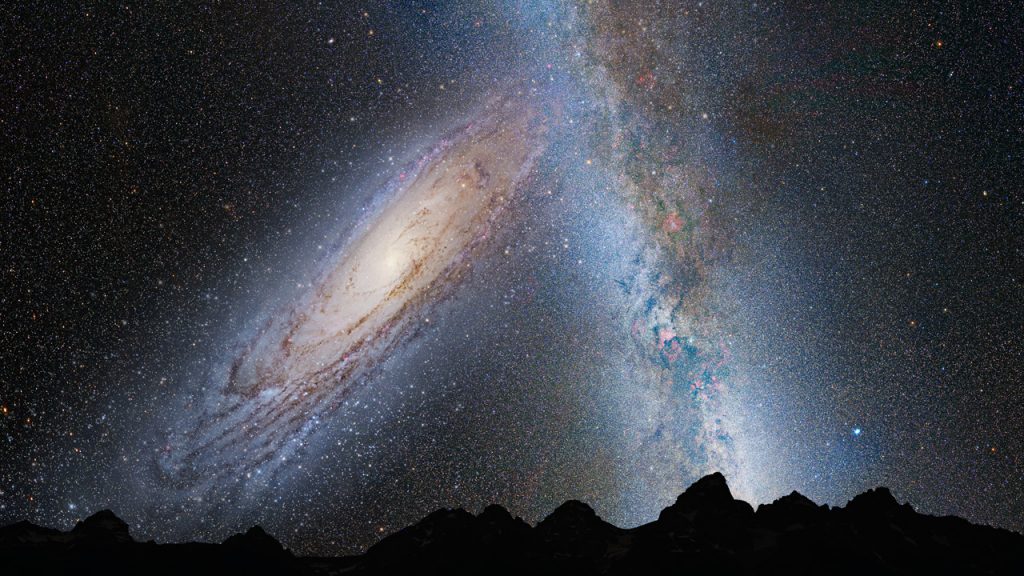“It’s the first. But it’s only the beginning, more will come and hopefully with every possible detail. With Webb, exoplanets are the new frontier of astronomy.” Mark Clampin, Director of the Astrophysics Division at NASA Headquarters in Washington, presents his predictions for future astronomical discoveries to the largest space telescope The most complex and expensive ever sent into space.The James Webb Space Telescope is part of a program led by NASA and in collaboration with the European European Space Agency, and with significant participation of astrophysicists from several countries (including Italy).Now it begins. The giant telescope that manages itself automatically in cataloging planets outside the first solar system, that is, those that orbit other stars in our galaxy.
Many of them have already been discovered so far with both satellites and powerful ground-based telescopes, and with different characteristics. But Webb’s cutting-edge scientific instruments and powerful mirrors promise a better understanding of the physical and chemical properties, above all of rocky ones, and so it could more closely resemble Earth. This is the case of 475b, which is 41 light years away from us: it is the first exoplanet discovered by the Webb Telescope, which has been operating since last June at a distance of one and a half million kilometers from Earth, after it was launched on December 25, 2021 from a European Ariane 5 rocket. Clampin, along with other Webb telescope researchers, broke the news this evening (late morning in the USA), during a press conference at the American Astronomical Society.
Discovery: a quasi-twin of Earth
The research team that obtained the data and images is led by Kevin Stephenson and Jacob Lustig-Yeager, both of Johns Hopkins University’s Applied Physics Laboratory in Laurel, based in Maryland. The team chose to observe the orb with Webb, after carefully examining data from NASA’s Transiting Exoplanet Survey Satellite (TESS), which suggested the presence of the planet. And so Webb’s near-infrared spectrometer (NIRSpec) captured the planet right away, with just two transit observations. “There is no doubt that the planet exists. Webb’s clean data confirm this – said Lustig-Yaeger -. “It’s impressive how small the rocky planet is,” Stephenson added.
“The results of the first observations of a rocky Earth-sized planet open the door to many future possibilities for studying the atmosphere of the rocky planet using Webb,” added Mark Clampin. Webb brings us closer than ever before to a new understanding of Earth-like worlds beyond the solar system.”
Of all the telescopes in operation, only Webb can characterize the atmospheres of Earth-sized exoplanets. The team sought to assess the contents of the planet’s atmosphere by analyzing its transmission spectrum. Although the data shows that it is a planet with similar size and characteristics to Earth, it is not yet known if it has an atmosphere.
Studies of the planet’s atmosphere began
The study is now beginning, particularly in the atmosphere. One of the determining factors for understanding whether a planet can host life forms: “There is some terrestrial atmosphere that we can rule out,” Lustig-Yaeger explained. It could not have a dense, methane-dominated atmosphere similar to that of Titan, one of Saturn’s moons.”
The team also notes that while it is possible that the planet has no atmosphere, there are some atmospheric compositions that have not been ruled out, such as a pure carbon dioxide atmosphere. “The atmosphere of 100% carbon dioxide is much more compact and difficult to detect,” Lustig-Yaeger adds. More precise measurements are needed to distinguish between a pure atmosphere of carbon dioxide and no atmosphere. The researchers plan to obtain additional spectra with other observations in the coming months.
Webb also revealed that the planet is a few hundred degrees hotter than Earth, so if clouds are detected, researchers can conclude that the planet is more like Venus, which has a carbon dioxide atmosphere and is permanently enveloped. From a dense, compact cloud: “We’re still in the infancy of studying small, rocky exoplanets,” said Lustig-Yaeger. We’re just beginning to scratch the surface of what the atmosphere might be like. “
The researchers also confirmed that the planet completes one orbit in just two days, information revealed almost instantly by Webb’s delicate light curve. Although LHS 475 b is closer to its star than any other planet in the solar system, its red dwarf star is less than half the temperature of the sun, so researchers think it may still harbor an atmosphere.

“Internet trailblazer. Travelaholic. Passionate social media evangelist. Tv advocate.”







More Stories
Watch the future “collision” between the Andromeda Galaxy and the Milky Way, the video is incredible
NASA's innovative and revolutionary sail that will make us fly into space using only the sun's energy
I Have a Nightmare About Parasites and Bugs in My House: Here are 5 Things to Don't Underestimate But That Attract These Uncomfortable Animals